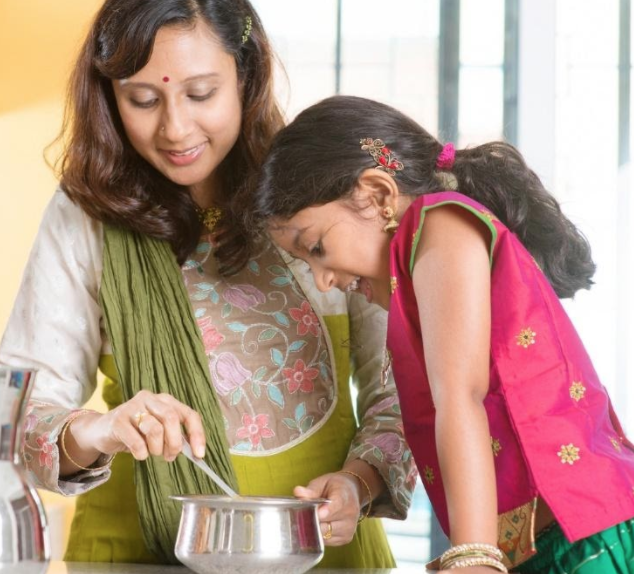Picky Eaters? Trying Cooking with Your Kids
Have little ones who think vegetables are yucky? One of the best way to get kids excited about meals is to invite them to cook with you.
This is especially important if kids have experienced trauma or adversity, which increases the risk of anxiety and depression. Not only does nutritious food lower that risk, but cooking it together provides a sense of connection and belonging.
It’s especially powerful when making a beloved dish passed down through generations.
“I made my first pseudo-dumpling when I was two years old,” wrote a Chinese college student in Texas, who remembers making dumplings with her grandmother in a Chinese village on a snowy night in the Lunar New Year. “According to my grandmother, I literally fell over with laughter when the soft dough oozed out between my fingers. I suppose that's why I've loved dumplings for as long as I can recall: it was one of the few dishes that a toddler could help with.”
Here are some tips to get your young chefs involved in cooking;
Take them shopping at your local farmers market. Invite them to pick out a vegetable or two – there’s nothing like sampling a sweet, juicy carrot or ripe tomato to get them thinking about actually eating it. If there’s not a farmer’s market nearby, visit the local supermarket (and plant a small backyard garden so kids can see where food really comes from).
Make them your kitchen helpers. It’s more fun if everyone is pitching in. The student who wrote about making dumplings in China recalls the pleasure of cooking them with her parents in Texas. “My father would roll out dough while telling long-winded jokes. My mother and I would laugh and gossip as we stuffed the dough with filling. By then a monthly tradition, dumplings amended past conflicts and allowed us to regain a sense of home and identity.”
Invite their ideas for cooking. Catherine McCord, author of the Weelicious cookbook series, has suggested parents ask questions like, “What should we do with this sweet potato? Could we mash it?” And don’t worry, you can politely veto their idea for an eggplant smoothie.
Try out some old family recipes. If you remember a dish you loved as a child, ask someone in the family for the recipe (maybe you already have it on an index card somewhere). Then recreate the dish with your kids, sharing some stories about your childhood while you’re in the kitchen together. Don’t worry if your kids get silly and tease you. As Mark Twain once said, “Sacred cows make the best hamburgers.”
Sit down and eat together. Family meals are one of the most important “anchoring” rituals a family can create. “The benefits don’t come from a well-cooked lasagna; they come from creating a warm atmosphere at the table,” Dr. Anne Fishel of the Family Dinner Project told us. “Even one dinner a week can be hugely positive if the atmosphere is warm and engaging.”


